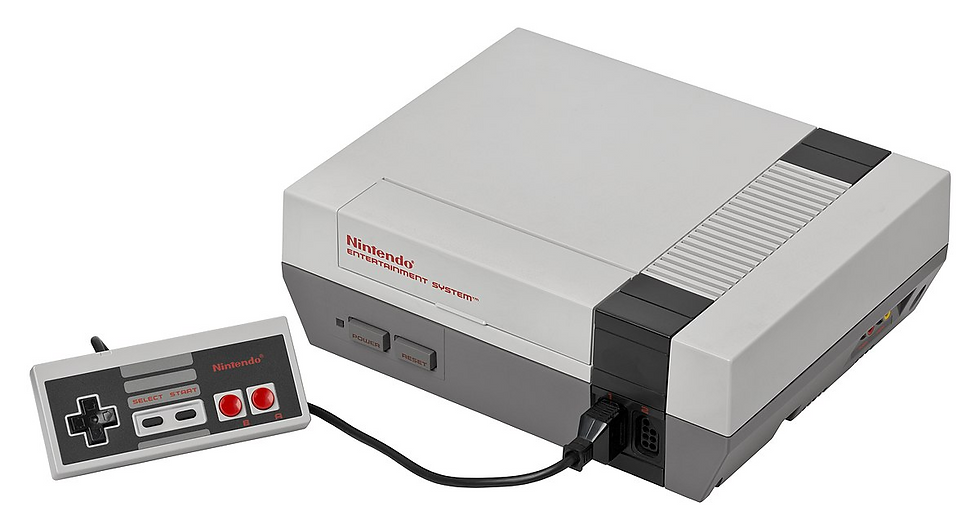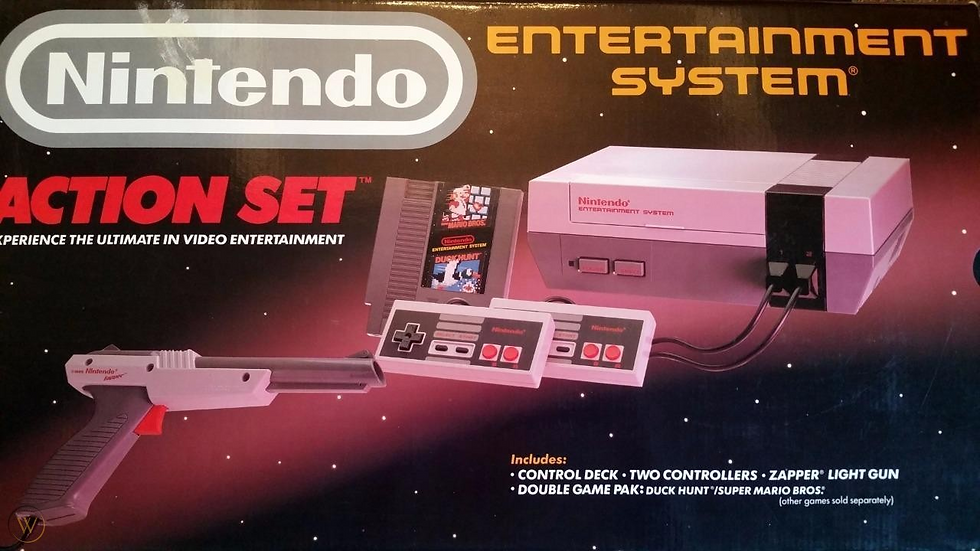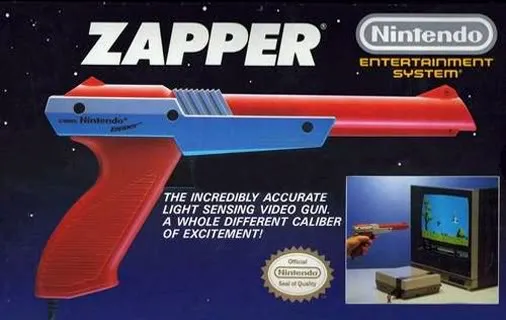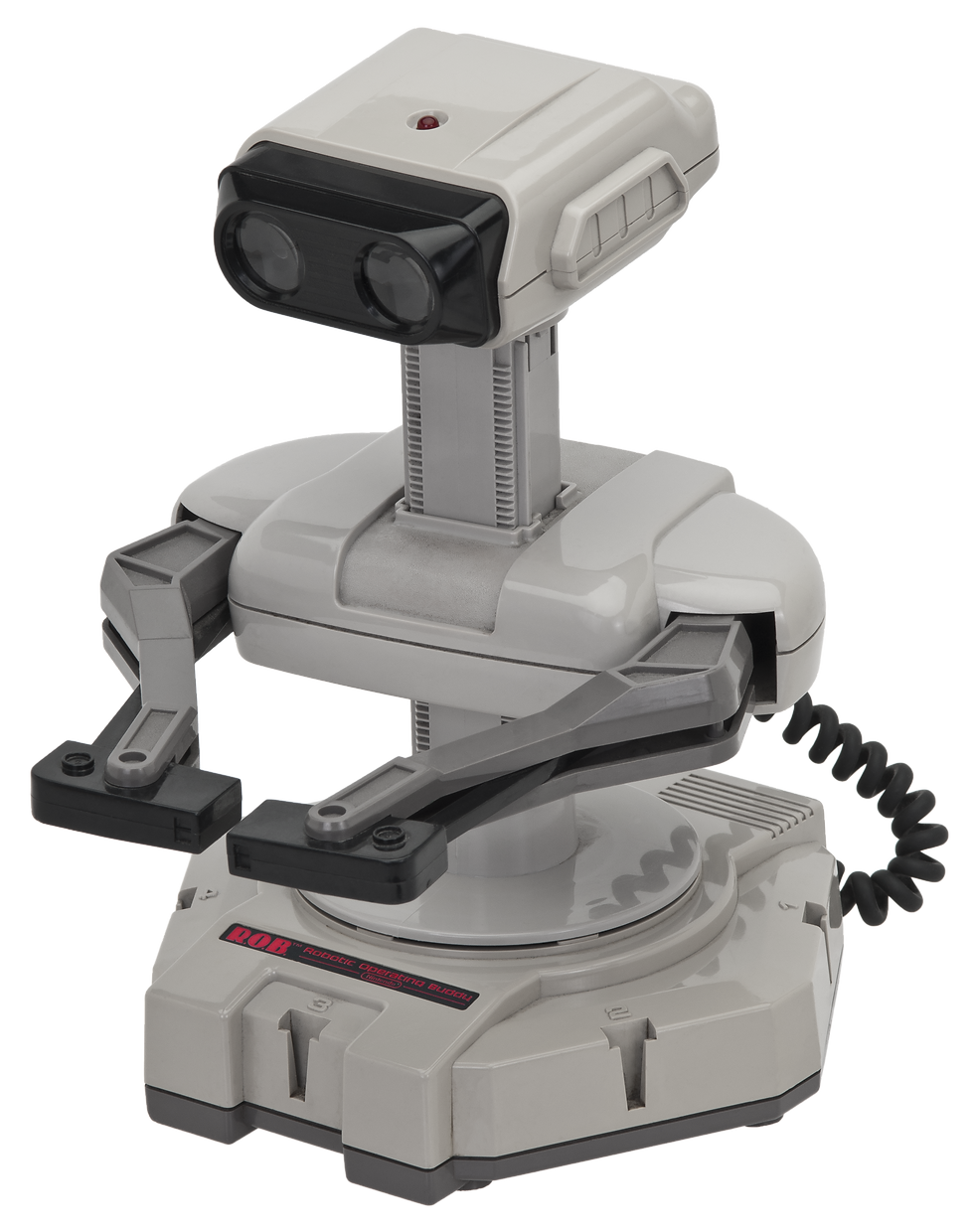The Nintendo Entertainment System (1985-1995)
- Sam Cawley
- Sep 29, 2021
- 0 min read
Everyone knows about Nintendo. The company has become the first brand most people think of when video games are mentioned and for good reason, as they're responsible for some of the most iconic gaming series to date. Tackling genre after genre, they've been an industry defining example of game design, even if they've stumbled every now and then along the way. However, it can be argued that Nintendo wouldn't be the global success it is today, if not for it's first major success in the worldwide gaming market, the Nintendo Entertainment System.

I thought it would be fun to take a look back at this console, looking into it's history, reception, some notable parts of its game library and some of its accessories. So let's take a look at what would become the foundation of Nintendo itself.
History
The NES is actually an iteration of an existing Nintendo console, called the Famicom, which was released exclusively in Japan. The Famicom was designed due to the success they found within arcades, which naturally led to them wanting to release the same arcade experiences, but within your home instead. The name essentially means "Family Computer", which was proposed by the wife of it's designer Masayuki Uemura. Uemura's wife argued that calling it the Famicom was a good decision because it differentiated it from being a work/personal computer, which it wasn't. In fact it was nothing like a computer at all. It was originally supposed to be one, featuring a keyboard, floppy disc support etc., but the final design revolved around specifically made game cartridges, in order to appeal to an non-technical audience.

After the Famicom's release in 1983, a worldwide release of the system was the next big step. After a sleek new redesign, Nintendo released the Nintendo Entertainment System, the first of their line of home consoles. The console was a hit. Having the ability to play arcade quality video games in the comfort of your own home was revolutionary and compared to the picture quality and graphics of the Atari products they were competing with, Nintendo were off to a strong start, taking the lead in the market for quite some time.
Game Library
You can't have a console without games, and by the time the NES had ended it's shelf life it boasted a a wide selection of some of the most iconic and famous titles in the game industry.
Packaged in with most NES consoles, you could play Super Mario Bros and Duck Hunt right out of the box. Two games that couldn't be more different but work well together, as you had Mario Bros for more level based, adventure platforming gameplay, whereas Duck Hunt was more of an arcade at home experience, going for high scores with the NES Zapper peripheral.(more on that later)

But what about games sold separately? Well there were plenty to choose from over the years. Early in the consoles life games released were quite tame in their ideas, with good examples being NES Soccer and Ice Hockey. But you still had more imaginative releases. The Legend of Zelda, Metroid, Kid Icarus, Castlevania, even the sequels to Super Mario Bros, showed that Nintendo were the go to company for entertaining video games.

Nintendo weren't afraid to license other games either. Batman, Ninja Gaiden, GhostBusters, Megaman, Disney games and a load more were released, leading to the full NES library consisting of 715 different games.
There are so many notable titles to talk about from the NES library and I'm hoping to eventually cover some of the big names and personal favourites in their own reviews in the future so stay tuned!
Accessories/Peripherals
Something that really set the NES apart from the rest is what it offered in terms of gimmicks and accessories. Again, this was during a time when the arcade experience was moving into your living room and the NES certainly capitalised on that idea with it's range of peripherals.
Here are some of the most famous examples;
The NES Zapper
The NES Zapper was a light gun accessory, that was compatible with a select number of games. I'm not going to get technical with how it works but the main point is that you could aim it at your television (CRT only) and shoot whatever was on screen depending on the game you were playing.

While it worked as an optional accessory for some games, there were a few that required it in order to be playable, examples being Duck Hunt, Gumshoe, and Wild Gunman, games that required quick reflexes with the zapper in order to play effectively.
While the idea is cool, the novelty doesn't really hold up nowadays. I'm sure it was an exciting concept during the 80s but playing with it currently, just makes it feel underwhelming. Nevertheless, it's remembered for a reason and reflects a level of creativity and design that isn't really seen anymore in the game industry, especially regarding console development.
R.O.B
R.O.B, otherwise known as the Robotic Operating Buddy, was a niche little accessory that unfortunately ended before he really began. He was intended to be a bit of a marketing figure for the NES, due his robotic appearance representing the futuristic tech of the NES.

In terms of being a gaming accessory, his primary function was being an optional second player for two specific games. Gyromite and Stack-Up. Using his own eyes to read TV signals, he was to act as a rival to the player while also looking cute.
Despite his charming appearance and ambitious cause, he simply wasn't a hit and was discontinued pretty quickly.
However R.O.B did live on, not only as a part of Nintendo's history, but also through their games, through cameos and being a playable character in Mario Kart DS and the Super Smash Bros series, so that's nice.
The Power Glove
Now we're playing with power. The Power Glove is probably one of the most disappointing, poorly received gaming accessories in history.

The product itself was licensed by Nintendo, but not made by them. In fact they had nothing to do with it whatsoever. Featuring a load of buttons and very small amounts of motion control, the glove worked with two games, Super Glove Ball and Bad Street Brawler. These games didn't require the glove itself to function but when used together it gave the player additional moves and actions that they could do in the game.
Selling 1 million units, the glove was the very essence of a gimmick, but has received a joke following due to it's appearance in the The Wizard, a Nintendo produced film about a boy who's incredibly talented at video games. During the film the boy faces off against another boy who uses the Power Glove, infamously saying "I love the Power Glove, it's so bad" cementing it as an internet joke forever.
Conclusion
I really do love the NES. From the design of the console itself, to its controller, and to its games, it's the first thing I think of when "games console" is mentioned and I believe that comes from the part it played in truly bringing games into the home.
In 1983 the gaming industry went through a "crash", meaning there was no guarantee that Nintendo were going to make the NES a hit, especially worldwide. Therefore I think people should look back fondly on this system, a remember it for what it was intended to be, a box of fun for people of all ages.
While finding a working NES can be tricky nowadays, its game library is easily obtainable through re-releases. Personally I'd recommend the NES Mini as it gives you the most value for money as well as being a cool collectors item.
I enjoyed talking about a console for a change and I'm excited to talk about more in the future, stay tuned!




Comments